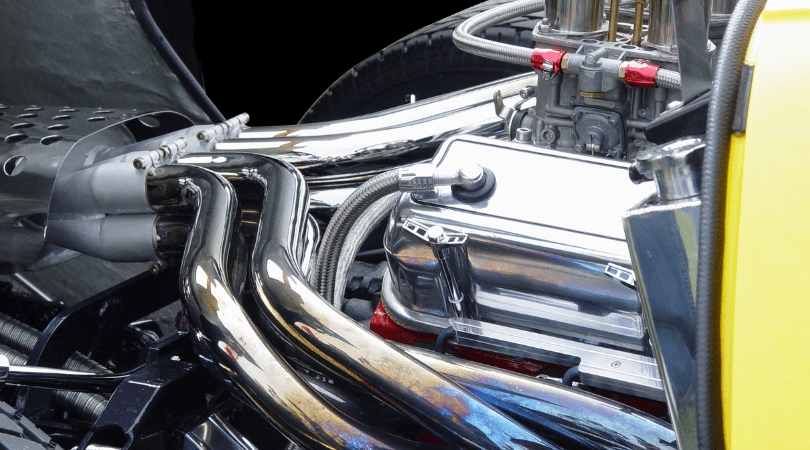Are you aware of the firing order for your Ford engine? If the answer is no, it’s highly beneficial to acquaint yourself with it! Familiarity with the firing order can significantly aid in diagnosing any engine issues that might arise. This discussion will delve into the 4.6 ford firing order.
Quick Navigation
Ford 4.6 Firing Order
The firing order for the Ford 4.6 engine is as follows: 1-3-7-2-6-5-4-8. Adhering to this order is pivotal for ensuring the engine’s seamless operation. Moreover, it significantly impacts the engine’s efficiency and dependability, particularly in Ford F-150 pickup trucks and other medium-duty vehicles within the F Series range.
The Ford 4.6 engine adheres to a firing order of 1-3-7-2-6-5-4-8. Maintaining this specific sequence is crucial for the engine’s seamless functionality. Furthermore, it influences the engine’s performance and reliability, particularly within F150 pickups and other medium-duty F Series trucks.
The Ford 4.6 boasts an arrangement of eight cylinders, laid out in a sequential pattern from front to rear, distributed in two banks with four cylinders each. This firing order aligns with all Ford V8 engines, with the sole exception being the Coyote 5.0.
Ford 4.6 Cylinder Numbers
In the Ford 4.6 V8 engine, the Engine Control Module (ECM) initiates the spark plug firing with Cylinder #1, situated at the front left. Following this, Cylinder #3 is fired on the left side. The sequence then transitions to Cylinder #7, positioned on the right side’s second bank.
Unlike Chevy 350 Firing Order The firing order continues with Cylinder #2, succeeded by Cylinders #6 and #5. The sequence concludes with Cylinder #4, positioned at the left rear, and Cylinder #8 at the right rear.
Featuring eight cylinders equipped with a spark plug, the Ford 4.6 is a V8 modular engine, with each set of four cylinders forming a single row at a 90-degree angle from the other.
Cylinder numbering for the Ford 4.6 commences with one through four on the left bank, moving from front to rear. The right bank’s numbering ranges from five to eight, extending from the radiator side at the front towards the back.
What is a Firing Order?
The firing order signifies the sequence of spark plug activation in an engine, vital in power delivery. It’s typically denoted by a timing mark on the engine’s crankshaft pulley or flywheel or concerning a piston’s position relative to the top dead center (TDC).
Most naturally aspirated inline-four engines follow a 1-3-4-2 firing order, though some manufacturers adopt a 1-3-2-4 sequence. In forced induction engines, the prevalent firing sequences are 1-3-4-2 and 1-2-3-4.
A well-tuned engine runs smoothly mainly due to a precise firing order, ensuring the appropriate spark plug activation sequence.
Discrepancies in this order can lead to “engine misfires,” causing power reduction, decreased fuel economy, and potential catalytic converter damage. Now that the importance of the firing order is evident let’s explore how to ascertain your car’s engine firing order.
Several methods exist to determine your car’s engine firing order.
One approach involves referring to your owner’s manual, while another requires locating the timing marks on the engine’s crankshaft pulley or flywheel.
Another method entails using a piston stop tool to identify the TDC on one cylinder’s compression stroke, followed by counting the crankshaft rotations until the subsequent cylinder reaches its TDC on the compression stroke.
Once you’ve identified your car’s engine firing order, cross-reference it with the manufacturer’s specifications for accuracy. Should they not match, engine repair or replacement is warranted.
How Does the Firing Order for a 4.6 Ford Work?
Let’s explore the two central ignition control systems incorporated into Ford’s 4.6 modular engine designs: the Waste Spark Ignition System and the Coil on Plug System.
- Waste Spark Ignition System
- Coil on Plug System
Waste Spark Ignition System
The Ford 4.6 engine had earlier versions that featured the waste spark ignition system. Its ECM controlled it. Under this system, the engine is equipped with two coil packs. Each group consists of four wires.
They are all connected in a pattern to enjoin with their corresponding spark plugs on cylinder banks. The ECM simultaneously sends a signal to two cylinders. Even if only a single cylinder needs ignition, the other is on the exhaust stroke. The spark energy to such a plug then wastes out.
This is the reason why it is called the waste spark ignition system. Also, you will observe four signal wires since two plugs are simultaneously controlled. This will come from the ECM and down to the coil packs.
Coil on Plug System
Ford introduced the Coilon Plug ignition system in its 1999 Ford Mustang model. Under this design, there is a coil separate for every spark plug. Each of these plugs is controlled by the ECM directly.
It does not have any distributor coil attached in the middle. You will observe eight wires that start from the control module and down to each spark plug on all cylinders.
The Coil Plug system is generally called the Distribution Less Ignition System, also known as the Distribution Less Ignition System. A sensor on the camshaft or the crankshaft detects its position.
This is to identify the next piston coming up to the Top Dead Center (TDC) and the one that requires ignition. The ignition module on ECM receives a signal from the sensor. The ECM triggers the coil for the corresponding spark plug, then fires.
The ECM repeats this procedure in a predefined sequence saved in its memory.
What Are The Implications Of An Incorrect Firing Order?
If the firing sequence of your cylinders is mishandled, adverse outcomes could occur. Your car might operate inefficiently or, perhaps, cease to run at all. A minor discrepancy might cause a misfire, but grave errors could damage essential components like valves, pistons, or crankshafts.
Thus, ensuring the correct firing order is paramount! The firing order signifies the order in which cylinders ignite, often inscribed on the cylinder head or intake manifold.
A flawed firing order may allow the engine to operate but with suboptimal efficiency and possible roughness. The cylinders would discharge erratically, causing excessive engine vibrations. This could lead to a backfiring engine or a complete engine seizure in the most severe cases.
Do All Ford Vehicles with 4.6 Engines Have the Same Firing Order?
Every Ford vehicle with a 4.6-liter V8 engine has an identical spark plug firing order. This uniformity spans various models, from Ford pickup trucks to sedans.
Such consistency in firing order ensures seamless operation and minimizes engine noise while maximizing power output from the engine.
Moreover, modern Ford V8 engines, belonging to the modular family, abide by the same firing sequence, regardless of the engine’s displacement. However, an exception to this rule is the 5.0 Liter Coyote engine.
What Factors Lead to Wrong Firing Order in Ford 4.6 Engines?
The precise activation order of spark plugs hinges on several factors, including distributor connections, computer signal wiring, spark plug coils, the camshaft and crankshaft position sensors, and the spark plugs themselves.
Several issues can disrupt the correct firing order in Ford 4.6 engines, such as:
[su_table responsive=”yes” fixed=”yes”]
| Potential Issue | Description |
| ECM Malfunction |
In the Ford 4.6 modular engine, the ECM controls all spark plugs with the help of spark coils, sensors, and a pre-determined sequence stored in its memory. Faulty ignition modules or damaged coil packs can result in the inaccurate activation of spark plugs, leading to car issues.
|
| Degraded Spark Plug |
The spark plug’s working condition is crucial to maintaining the correct firing pattern. A faulty or misfiring spark plug can result in firing at incorrect positions. Symptoms of a worn spark plug include the vehicle’s failure to start, noisy operation, and noticeable vibrations.
|
| Faulty Spark Plug Wiring |
Depending on the ignition system, the ECM communicates with the spark plug coils through distributors or direct connections. Miscommunication can cause the spark plug to activate at inappropriate times, such as when the valve is closed or during the piston’s exhaust phase.
|
| Damaged Crankshaft Position Sensor |
The crankshaft position sensor relays information to the ECM about the first spark to be fired. Inaccurate information can lead the computer to ignite the wrong spark plug, disrupting the entire sequence.
|
[/su_table]
Downsides of Wrong Firing Order in 4.6 Ford Engine
The engine’s firing order configuration is meticulously designed to optimize engine balance and minimize unnecessary vibrations. However, an incorrect firing order in a 4.6 Ford Engine can lead to various undesirable outcomes, including:
Amplified Vibrations: When cylinders fire concurrently, the engine momentarily receives peak power, but subsequently, there might be a significant drop-off. This results in an inconsistent, jerky operation.
A correct firing order ensures smooth energy distribution throughout the entire combustion cycle. Discrepancies in the sequence could cause the engine to run unevenly, giving rise to unwarranted vibrations.
Engine Backfiring: Backfiring, characterized by a loud bang, typically results from an ignition within the exhaust chamber or intake manifold.
Any changes in the distributor’s wiring order may disrupt the entire sequence, leading to backfiring, damaging engine components, and resulting in unnecessary fuel wastage.
Engine Start Failure: An engine may not perform or even start if the firing order is incorrect or delayed. The firing order dictates systematic steps: valve opening, air-fuel mixture injection, compression, and spark plug ignition.
Reduced Engine Performance: The engine’s performance is intrinsically linked to the proper firing sequence, facilitating maximum power delivery to the crankshaft.
Performance deficiencies are often a result of an incorrect firing sequence, which may cause backfiring, misfiring, or non-firing. This could also lead to rough idling and a substantial reduction in efficiency.
Unpleasant Engine Noise: Disturbance in the firing order could lead to unusual and loud noises from the engine. These could be due to the simultaneous firing of two cylinders, piston-valve collisions, incomplete combustion, or backfiring.
Therefore, the proper sequence of spark coils, timing belts, or chains must be meticulously maintained.
How Does A Coil-on-plug System Work For a 4.6 Ford Firing Order?
The Ford 4.6 firing order saw the advent of coil-on-plug ignition methods in 2010. This configuration offers an individual circuit for each spark plug. Furthermore, each component is governed directly by the Engine Control Module (ECM), negating any need for a distribution coil. In this setup, eight cables link the control unit to the spark plugs of all cylinders, earning it the alternate moniker of a “distributor-less” ignition system.
A sensor measures the position of the crankshaft or camshaft at the Top Dead Center (TDC), which helps determine the next cylinder due for ignition.
The ignition module within the ECM receives a signal from this sensor, triggering the coils associated with the corresponding spark plugs to ignite. Following this operation, the ECM repeats the procedure in line with the stored sequence in its memory.
Could Defective Spark Plugs Disrupt the Firing Order, and Can They Be Replaced?
Your spark plugs’ well-being can significantly affect your engine’s firing sequence. When spark plugs fail to operate as intended, the ignition timing deviates, leading to engine misfires.
This malfunction can spawn various issues, including diminished fuel efficiency and escalated emissions. In extreme cases, it could even culminate in engine damage.
If you notice your vehicle’s performance faltering and suspect the spark plugs are the culprits, inspecting them would be prudent.
1. Begin by identifying the location of the spark plugs. Generally, they’re situated near the engine’s apex, beneath the coil packs, if applicable. For precise directions, always refer to your vehicle’s user manual.
2. Having located the plugs, utilize a ratchet or socket to loosen and extract them. Take caution not to drop them, given their fragility and susceptibility to damage.
3. Now, compare the new spark plugs to the old ones. If any appearance discrepancy (such as thread length variations) is noted, do not proceed with their installation. Instead, refer to your vehicle’s user manual or seek guidance from a skilled mechanic to confirm the suitability of these plugs for your vehicle.
4. Upon validation that the new plugs are appropriate for your vehicle, proceed with their installation. Initiate this process by applying minimal anti-seize compound to the threads. This will mitigate the risk of the plugs seizing in the cylinder head.
5. Concluding the process, employ your ratchet or socket to secure the plugs until they are comfortably tight. Exercise caution not to apply excessive force, as this could damage the threads or other associated complications.
FAQs
Here are some commonly posed queries regarding the Ford 4.6 firing order. Let’s delve into these to enhance our understanding.
Why does Ford use a different firing order?
As per the engineers at Ford Motor Company, the 5.0L H.O. utilizes the 351W firing order (1-3-7-2-6-5-4-8) to enhance the acoustic quality of the intake manifold. The distinct sonorous characteristic of Ford’s 5.0L H.O. is significantly amplified by integrating a cold air intake system and a set of chambered mufflers.
What is the firing order on a 5 4 Ford?
The appropriate firing sequence is 1-3-7-2-6-5-4-8, commencing with cylinder 1 at the highest point on the passenger side.
Why is firing order 1-3-4-2?
For the sake of optimal stability, the firing sequence of the engine is configured as 1-3-4-2. Each time a power stroke occurs within a cylinder, the piston is exerted upon. This process produces power as the chamber pushes the piston downward. However, the magnitude of power generated during this process is considerably high, and it can induce the entire engine to wobble at elevated revolutions per minute (rpm).
Which is the most popular firing order?
Engines with a straight-six configuration generally adopt a firing sequence of 1-5-3-6-2-4, establishing impeccable primary and secondary equilibrium. Nevertheless, encountering a distinct firing pattern in medium-speed marine engines, 1-2-4-6-5-3, is not unusual.
Is a particular firing order necessary?
The firing order of an engine signifies the particular sequence in which distinct cylinders experience a power event. This firing sequence is meticulously engineered to maximize engine balance, substantially mitigating vibration.
The Conclusion
That is all I wanted to say on Ford 4.6 Firing Order.
The Ford 4.6 engine follows a 1-3-7-2-6-5-4-8 firing order, a sequence crucial to ensuring the engine’s seamless operation. Furthermore, this specific firing order influences the efficiency and dependability of engines found in F150 pickup trucks, among other medium-duty vehicles in the F Series.
The Ford 4.6 engine boasts an arrangement of eight cylinders in an orderly sequence from front to rear, divided into two banks, each housing four cylinders. Its firing sequence is consistent with all other Ford V8 engines, with the sole exception being the Coyote 5.0.




